For many seniors, Medicaid is a crucial program that helps manage the high costs associated with long-term care, such as nursing homes. However, the rules around Medicaid eligibility are quite strict and require careful asset management. A major concern for seniors and their families is the Medicaid clawback, also known as Medicaid payback, which allows states to reclaim costs from a deceased Medicaid recipient’s estate. To help seniors qualify for Medicaid while ensuring their heirs preserve their wealth, effective strategies for asset protection for seniors are vital.
Understanding Medicaid Clawback and Look-Back Period
The Medicaid clawback process involves state Medicaid programs attempting to recover funds from the estates of those who have passed away while receiving Medicaid benefits. This process, commonly referred to as estate recovery, is tied to the Medicaid look-back period, which is typically five years. During this time, any transfers of assets for less than fair market value are closely examined. If assets are transferred in this period, it could lead to penalties or a delay in receiving Medicaid benefits. That’s why planning ahead for asset protection for seniors is essential, ideally before the look-back window, to protect assets effectively.
Medicaid Asset Protection Trusts (MAPTs)
A powerful tool for asset protection is the Medicaid Asset Protection Trust (MAPT). This irrevocable trust is specifically designed to shield assets from Medicaid’s asset limits and clawback rules. Once assets are transferred into this trust,and five years from the transfer have passed, they are no longer considered part of the individual’s estate for Medicaid eligibility purposes. Importantly, these assets can’t be accessed by Medicaid for payback after the grantor’s death. It’s crucial to set up the trust well before applying for Medicaid, ideally outside the five-year look-back timeframe. While the original owner gives up control, a trustee manages the assets according to the trust’s guidelines, often ensuring the grantor can still benefit from them during their lifetime.
Asset Spend-Down and Exempt Asset Conversion
For seniors who haven’t had the chance to plan ahead, a strategic spend-down of assets can be helpful. This involves converting countable assets into exempt assets or spending on acceptable costs. Examples include prepaying funeral arrangements, making necessary home repairs, purchasing exempt annuities, or paying off outstanding debts. By reducing the countable assets through these approaches, seniors can maintain Medicaid eligibility without incurring penalties, provided it’s done correctly. Spend-down strategies align with Medicaid rules to help seniors hold onto value while qualifying for benefits.
Gift Giving and Transfers
Gifting assets to family members or loved ones is another way to lower a senior’s countable estate. However, it’s essential to handle these transfers carefully due to the Medicaid look-back rule. Gifts made within five years prior to applying for Medicaid can lead to penalties. That said, planned gifting outside this window can still serve as a viable asset protection strategy. Seniors can also take advantage of annual gift tax exclusions, allowing them to give a certain amount to each recipient tax-free every year. It’s advisable to consult an elder law attorney before making gifts to avoid unintentional disqualification from Medicaid or tax problems.
Income Trusts and Qualified Income Trusts
Income trusts, such as Pooled Income Trusts or Qualified Income Trusts, are designed to address Medicaid’s income restrictions. These irrevocable trusts allow seniors with incomes exceeding Medicaid limits to qualify for benefits by placing their excess income into the trust. Managed by designated trustees, these trusts keep income safe from Medicaid’s eligibility calculations and provide ongoing financial support for the senior. Income trusts are particularly beneficial for seniors whose income sources might otherwise make them ineligible for Medicaid.
Long-Term Care Insurance and Medicaid Exempt Annuities
Long-term care insurance is another option that can help cover or offset costs associated with long-term care, which lessens the need to exhaust assets or solely depend on Medicaid. For those who do end up using Medicaid, Medicaid exempt annuities can convert a lump sum into a series of income payments. These annuities are designed to lower countable assets while providing income, often benefitting the spouse not on Medicaid. However, they must comply with state requirements, such as naming Medicaid as the primary beneficiary. These strategies help facilitate a spend-down without compromising income or asset protection.
Working with Experienced Elder Law Attorneys
Navigating Medicaid planning can be complex, with strict rules and timelines. Therefore, it’s essential to collaborate with experienced attorneys who specialize in elder law and Medicaid planning. These professionals can help create personalized asset protection plans tailored to each senior’s financial situation and family goals. Their expertise ensures compliance with Medicaid regulations, helps avoid penalties, and maximizes the preservation of assets for both seniors and their heirs.
Take the Next Steps to Protect Your Assets Today
Asset protection for seniors from Medicaid clawback takes careful planning and specialized financial and legal strategies. Familiarity with the Medicaid look-back period and utilizing tools like MAPTs, spend-down methods, gifting, income trusts, life estates, and exempt annuities are all critical in safeguarding seniors’ wealth. Families should seek out elder law experts to effectively navigate this complicated landscape. By proactively planning asset protection, seniors can ensure they receive necessary care while preserving their financial legacy for future generations.
At Antanavage Farbiarz, our compassionate team is here to help seniors through the intricacies of Medicaid planning and asset protection. Contact us for a consultation to develop a tailored plan that safeguards your hard-earned assets from Medicaid clawback, providing you with peace of mind today and in the years to come.
Stay up to date with the latest tips from Antanavage Farbiarz, PLLC by following us on Facebook and LinkedIn.
